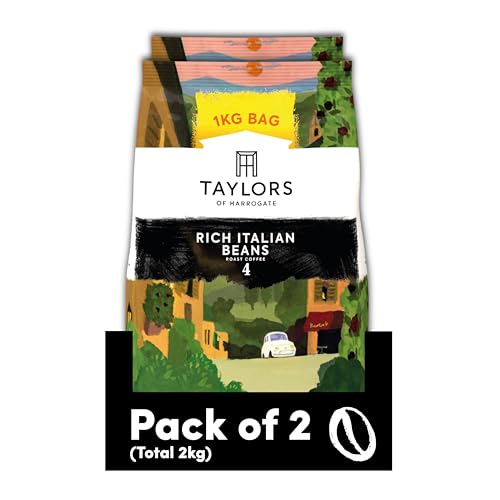Coffee Bean Types: Arabica, Robusta, Liberica, and Excelsa
You probably already know that different types produce distinct flavors. Read on to learn about four of the most popular varieties: Arabica, Robusta, Liberica and Excelsa.
Excelsa beans are one of the varieties of Liberica that is grown exclusively in Southeast Asia. They have a fruitier, more tart flavor profile and are often used in blends of coffee to add depth.
Arabica
Arabica coffee beans are responsible for 75% of the global production. Arabica beans are more mild and sweeter than Robusta, and come in different flavors. The aroma and taste of coffee are affected by the conditions under which it is grown and the processing methods employed.
The word "coffee" is derived from the Arabic word that means berry. Coffee beans are actually seeds that grow inside bright red berries. It is believed ancient Ethiopian shepherds noticed that their goats were energized by eating these berries. The cultivation of coffee quickly spread around the world.
Coffee beans can grow at high altitudes, and thrive in cool temperatures and lots of rain. This is the reason Arabica coffee is thought to be the most delicious kind of coffee.
Many specialty coffee shops and roasters are focused on ethical sourcing of arabica beans, with a focus on fair wages for farmers and sustainable farming practices. These companies typically blend arabica beans to create unique signature coffees that work well with various brewing methods. Blending is a way to control the flavour, aroma as well as body and acidity of the coffee. It is usually preferred to achieve an even and consistent taste that appeals to a larger market.
Robusta
Robusta beans (Coffea canephora) are the second most popular type of coffee bean grown in the world. They have more caffeine per bean and are more protected against diseases and pests. They also have higher levels of chlorogenic acids that are antioxidants naturally found in. However, these acids may cause oxidation during the coffee brewing process and can cause undesirable flavors.
The plant is more durable than the arabica and can be grown in less favorable climates. It can withstand warmer temperatures and thrives in direct sun. It is faster growing and produces more coffee per plant than arabica, which makes it a cheaper crop to grow.
While it may seem counterintuitive Robusta beans are frequently combined with arabica to create coffee blends. If you notice the names of countries such as Uganda or Kenya listed on a bag of coffee and you can be sure that there's some Robusta in there as well.
Most roasters employ a mixture of arabica and coffee beans to cut costs and ensure quality. To preserve the flavor integrity, you should choose the best quality beans from a reliable source. The best method to achieve this is to buy your beans directly from the farmer.
Liberica
Liberica beans are more or less football shaped that makes them different from other varieties of coffee beans. They have a unique aroma that is floral and fruity with smokey undertones. They are paired with other coffee bean types to provide them with a more rich and more robust taste.
coffee beans london are available in West Africa, Malaysia (Borneo) and Southeast Asia. They can thrive in low altitudes and tolerate humid, hot climates. They also have a much better resistance to disease than Arabica and Robusta.
These qualities make them ideal for growing at home. Online, you can buy the seeds from many sources. However, it is ideal to purchase the beans from local producers to guarantee quality. The ideal conditions for growing Liberica coffee plants are fertile deep volcanic soils, with moderately acidic pH, and adequate annual rainfall.
Excelsa is another type of coffee bean. It was once classified as a separate species, but has since been classified as a Liberica variant. These coffee beans are ovals that are cultivated on 20 to 30 feet coffee plants at medium altitudes. They have a distinctive taste that is both fruity and tart that has made them a popular choice in house blends. They are also less heavy on flavor and caffeine than Arabica and Robusta, but still have a distinct quality of flavor.
Excelsa
Excelsa coffee beans aren't as widely used as Arabica and Robusta, although they're fourth popular. In fact they were regarded as a separate coffee plant species until 2006 when they were reclassified to an alternative to Coffea liberica var. dewevrei. Today, they're grown mainly in Southeast Asia and account for 7 percent of the world's coffee production. The beans are distinctive with a teardrop shape and have an eerie, dark taste. These beans are often used to give blends additional body and a rich, tart taste of ripened fruits.
Arabica beans are the most sought-after, and are renowned for having a the most delicious taste. They thrive best at high altitudes and have warm, tropical climates. They also have a bit of acidity. When roasted and brewed correctly they may impart notes like nuts, chocolate or even fruit.
Robusta is the second most sought-after coffee in the world, and is responsible for 40% of all coffee consumed in the world. Robusta beans are smaller and rounder however, they contain twice as much caffeine as Arabica. They also have more bitterness than the other two varieties and tend to have earthy and woody overtones.

Once you've mastered the four most commonly used types of coffee beans, it's time to choose your perfect brew. If you prefer a smooth and delicate flavor opt for an arabica, or a blend consisting of arabica beans and robusta beans.
